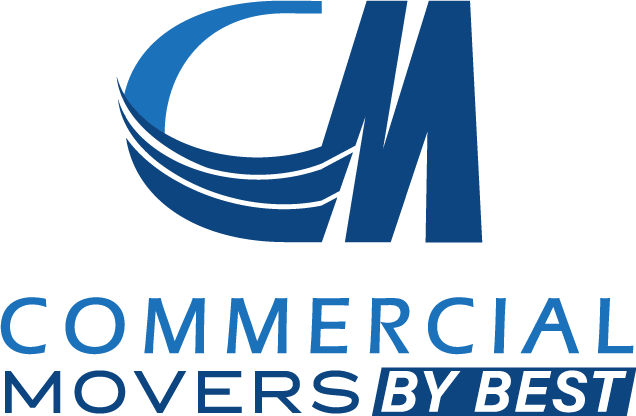Finding safe and reliable storage options is essential for businesses facing space limitations, seasonal inventory changes, or relocation challenges. With the office relocation services market growing to $14.6 billion by 2032, storage needs are more prominent than ever.
Short-term and long-term storage options each offer distinct advantages depending on how long items need to be stored and how often they need to be accessed. Choosing the wrong solution can lead to unnecessary costs, limited access, or even damage to valuable assets.
Here are five key factors to consider when deciding between short-term and long-term storage for safe and reliable storage options.
Key Takeaways✔ Short-term storage for moving offers flexibility and quick access, while long-term storage solutions provide better cost efficiency for extended needs. ✔ Short-term storage allows frequent and easy access, while long-term storage facilities may require advance notice for retrieval. ✔ Long-term storage solutions offer enhanced security and climate control, making them ideal for sensitive and high-value items. ✔ Short-term storage has higher monthly rates but provides greater flexibility, while long-term storage offers lower costs with longer commitments. ✔ Short-term storage for moving is ideal for relocations and temporary needs, while long-term storage supports consistent inventory management. ✔ Proper packing, including labeling and using protective materials, helps protect business assets during storage and ensures easy access. ✔ Strategic planning, assigning a storage coordinator, and maintaining communication are key to streamlining business operations during a storage transition. |
1. Duration and Commitment
For many organizations, short-distance moves are the most common type of relocation, and the length of time a business needs to store items often determines whether short-term or long-term storage is the best fit. Short-term storage is ideal for quick and temporary needs, while long-term storage works better for extended periods and consistent storage requirements.
Aspect | Short-Term Storage | Long-Term Storage |
Length of Storage | Short-term storage for moving typically lasts from a few days to a few months. It’s perfect for temporary needs like storing office furniture during renovations or transitions. | Long-term storage solutions are designed for six months or longer, making them ideal for storing business records, equipment, and inventory not needed regularly. |
Contract Terms | Most short-term storage options are available with flexible, month-to-month agreements. This allows businesses to adjust storage needs without long-term commitments. | Long-term storage often requires a longer contract to secure lower monthly rates, but this provides cost stability for businesses with consistent storage needs. |
Cost Impact | Short-term storage usually has higher monthly rates due to the added flexibility and quick access. However, it’s cost-effective for short-term or one-off projects. | Long-term storage solutions provide lower monthly rates since the commitment period is longer, helping businesses manage storage costs over time. |
Short-term storage for moving offers flexibility and quick access, while long-term storage solutions provide better cost efficiency for extended needs.
2. Accessibility and Convenience
Easy access to stored items can make a significant difference in business operations. Short-term storage is designed for quick and frequent access, which is beneficial during transitions or temporary projects. Long-term storage, on the other hand, focuses more on secure and organized storage for items that don’t need to be accessed regularly.
Aspect | Short-Term Storage | Long-Term Storage |
Access Frequency | Short-term storage for moving allows easy and frequent access. Businesses can retrieve or rotate items quickly without advance notice, making it ideal for temporary storage solutions for moving. | Long-term storage solutions are better suited for items not needed often. Facilities may have set access hours or require advance notice to retrieve stored items. |
Location and Proximity | Short-term storage options are often located near business hubs or easily accessible areas, which reduces transportation time and costs. This makes them convenient for businesses needing quick access. | Long-term storage facilities may be located further from city centers to reduce costs and accommodate larger storage spaces, which may require more planning for retrieval. |
Handling and Organization | Short-term storage facilities are set up for quick loading and unloading. Items are typically organized for easy identification and immediate use. | Long-term storage solutions often involve deeper organization and cataloging systems to track inventory and protect items over time. |
Short-term storage for moving provides quick and easy access, while long-term storage solutions focus on secure organization and strategic long-term management.
3. Security and Protection
Protecting business assets is a top priority, whether they are stored for a few weeks or several years when finding safe and reliable storage options. Short-term storage typically provides basic security measures, while long-term storage solutions often offer enhanced protection for sensitive or high-value items. Choosing the right level of security depends on the value and sensitivity of the stored assets.
Aspect | Short-Term Storage | Long-Term Storage |
Surveillance and Monitoring | Short-term storage for moving often includes basic security, such as locked units, limited access points, and surveillance cameras. | Long-term storage solutions typically offer 24/7 surveillance, gated access, and advanced security systems to prevent theft and damage. |
Climate Control | Most short-term storage facilities offer limited climate control since items are not expected to be stored for extended periods. This may not protect against humidity, temperature changes, or mold. | Long-term storage solutions often include climate control to protect sensitive materials, electronics, or important documents from damage over time. |
Valuation and Liability | Short-term storage providers may offer basic valuation coverage, but it’s often limited. Businesses need to assess coverage to protect valuable items. | Long-term storage solutions usually provide more comprehensive valuation options to cover damage, loss, or environmental risks over time. |
Long-term storage solutions offer more comprehensive security and climate control, while short-term storage for moving provides essential protection for quick turnaround needs.
4. Cost and Budget Considerations
Cost plays a significant role in choosing between short-term and long-term storage. While short-term storage offers flexibility, it comes at a higher monthly rate. Long-term storage solutions provide better value over time, but they may require longer commitments.
Aspect | Short-Term Storage | Long-Term Storage |
Monthly Costs | Short-term storage options have higher monthly fees because of the added convenience and flexibility. Costs are based on shorter rental periods and immediate access. | Long-term storage solutions have lower monthly rates due to longer commitments, helping businesses save on storage costs over time. |
Setup and Termination Fees | Short-term storage for moving may include delivery, setup, and pickup fees. However, the overall costs are usually manageable due to the shorter duration. | Long-term storage contracts may have lower setup fees, but early termination could result in penalties or extra costs. |
Cost Flexibility | Short-term storage solutions allow businesses to adjust or cancel storage as needed without major financial penalties. | Long-term storage requires more consistent payments, but predictable monthly costs help with financial planning. |
Short-term storage for moving is ideal for temporary flexibility, while long-term storage solutions offer cost-effective value for extended business needs.
5. Business Use Cases and Suitability
The type of business and the specific storage needs will determine whether short-term or long-term storage is the better fit. Temporary storage solutions for moving are perfect for quick transitions, while long-term storage suits businesses with ongoing storage requirements.
Aspect | Short-Term Storage | Long-Term Storage |
Business Relocations | Short-term storage for moving is perfect for businesses that are relocating and need to store equipment and furniture temporarily. It ensures quick access and flexibility during the transition. | Long-term storage solutions are better for businesses moving into smaller offices and needing a long-term solution for excess equipment or files. |
Inventory Management | Retailers often use short-term storage to manage seasonal inventory or promotional items. Quick access allows for easy rotation of stock. | Long-term storage is ideal for storing large volumes of inventory or overflow stock that isn’t needed regularly but must be available when demand increases. |
Document and Record Storage | Short-term storage can hold active records and files that require frequent updates or reviews. | Long-term storage solutions are more suitable for archiving records, legal documents, and financial files that must be retained for compliance purposes. |
Short-term storage for moving supports temporary business needs, while long-term storage solutions are ideal for consistent, long-term asset management.
How to Properly Pack and Prepare Items for Storage
Packing and preparing business items for storage is essential to prevent damage and ensure easy access when needed. Whether using short-term storage for moving or long-term storage solutions, following proper packing techniques can protect valuable assets and make the retrieval process more efficient. Here are six practical steps to pack and prepare business items for safe and reliable storage options:
1. Choose the Right Packing Materials
Selecting the right packing materials helps protect items from damage during transport and storage. Use heavy-duty cardboard boxes, plastic bins, and bubble wrap for fragile or valuable items. For long-term storage solutions, moisture-resistant containers and vacuum-sealed bags are ideal for protecting sensitive materials from humidity and dust.
2. Protect Electronics and Office Equipment
Electronic equipment such as computers, printers, and servers require careful packing to avoid internal and external damage. Wrap cables and label them clearly to make reinstallation easier. For storage during a move, anti-static bubble wrap and padded cases provide additional protection against shocks and static discharge.
3. Label Everything Clearly
Accurate labeling makes it easier to locate and retrieve items when needed. Use a consistent labeling system with color codes or barcodes for easy identification. For long-term storage solutions, create a digital inventory list that details the contents of each box or container for quick reference.
4. Disassemble Furniture and Large Equipment
Breaking down large furniture and equipment saves space and reduces the risk of damage before moving to storage during a move. Remove table legs, chair backs, and detachable components and store them together with labeled bags of screws and fittings. For temporary storage solutions for moving, this approach makes transportation and reassembly easier.
5. Protect Fragile and High-Value Items
Delicate items such as glassware, artwork, and sensitive documents require special care. Wrap fragile items individually in bubble wrap and secure them with packing tape. For long-term storage solutions, consider placing fragile items in climate-controlled units to prevent damage from temperature fluctuations.
6. Maximize Storage Space Efficiently
Organize items strategically to maximize the use of storage space and prevent shifting during transport. Place heavier boxes at the bottom and lighter items on top to avoid crushing. For short-term storage for moving, consider using stackable containers to make loading and unloading more efficient.

How to Streamline Business Operations During a Storage Transition
Managing business operations with storage during a move requires careful planning and coordination to avoid disruptions. Whether using short-term storage for moving or transitioning to long-term storage solutions, a smooth process ensures that business activities continue without delays. Here are six practical steps to keep business operations running efficiently during a storage transition:
1. Create a Detailed Transition Plan
A clear and detailed transition plan helps minimize confusion and ensures that all team members understand their roles. Outline key dates, responsibilities, and deadlines for packing, transportation, and storage setup. For businesses using temporary storage solutions for moving, include contingency plans to handle unexpected delays or issues.
2. Assign a Storage Coordinator
Appointing a dedicated storage coordinator ensures that the transition process stays organized and on track. The coordinator should oversee packing, transportation, and inventory management while acting as the main point of contact for the storage provider. For businesses using moving and storage services near me in White Plains, NY, a single point of contact helps reduce miscommunication and delays.
3. Keep Essential Items Accessible
Store frequently used items separately from long-term storage solutions to avoid disruptions. Essential files, office supplies, and equipment should be placed in easy-to-access containers or separate short-term storage for moving. This prevents business slowdowns caused by digging through storage for important items.
4. Schedule the Transition During Off-Peak Hours
Timing the transition during non-business hours or slow periods minimizes operational disruptions. Early mornings, evenings, or weekends are ideal for relocating equipment and inventory into storage. Temporary storage solutions for moving can help stagger the transition, reducing the impact on daily operations.
5. Communicate With Staff and Vendors
Keeping staff and business partners informed about the transition helps prevent confusion and disruptions. Provide regular updates on the timeline, storage locations, and any changes to business operations. For businesses using moving and storage services near me in White Plains, NY, sharing access details and retrieval protocols ensures smooth coordination.
6. Monitor Progress and Make Adjustments
Track the progress of the transition to identify and address issues as they arise. Regularly check in with the storage coordinator and adjust the plan if necessary to keep operations running smoothly. Safe and reliable storage options provide the flexibility to make quick adjustments without affecting business continuity.
Frequently Asked Questions (FAQs)
What types of businesses benefit the most from short-term storage for moving?
Short-term storage for moving is ideal for businesses undergoing office relocations, renovations, or temporary downsizing. Retail businesses often use short-term storage to hold seasonal inventory or promotional materials. Event companies and trade show vendors also benefit from temporary storage solutions for moving, as they frequently need to store equipment and displays between events.
Can long-term storage solutions accommodate sensitive or specialized equipment?
Yes, long-term storage solutions are designed to handle sensitive and high-value business equipment. Many facilities offer climate-controlled storage to protect electronics, medical equipment, and sensitive documents from humidity and temperature fluctuations. Enhanced security features like surveillance cameras and gated access provide added protection against theft and damage.
How can businesses reduce costs when using moving and storage services near me?
Bundling moving and storage services can help businesses save on overall costs by combining transportation and storage into a single service package. Businesses can also reduce costs by properly organizing inventory to maximize storage space and avoid needing additional units. However, costs and solutions vary widely per provider. It’s best to contact services like Commercial Movers By Best to get accurate estimates.
What are the risks of not using professional storage solutions?
Without professional storage, businesses face the risk of damaged, lost, or stolen items. Improper packing, poor climate control, and lack of security can lead to deterioration of sensitive equipment and valuable inventory. Businesses may also face increased downtime if they can’t quickly access stored assets during critical operations.
How can businesses prepare for transitioning from short-term to long-term storage?
Transitioning from short-term storage for moving to long-term storage requires strategic planning. Businesses should reassess storage needs, inventory volume, and frequency of access to determine the best long-term storage solutions. Items that are not frequently needed should be transferred to a more secure, climate-controlled facility for better protection. Partnering with a provider offering both short-term and long-term options ensures a seamless transition and continued access to stored assets.

Secure Expert Storage Solutions with Commercial Movers By Best
Need reliable storage solutions for your business? Commercial Movers By Best in White Plains, NY, offers secure short-term and long-term storage services to keep your assets safe during transitions. Whether you’re relocating, renovating, or managing excess inventory, our climate-controlled facilities and expert handling ensure your equipment, furniture, and documents remain in top condition.
Trust our expertise to keep the transition smooth and your business running without disruption—schedule a consultation today!


